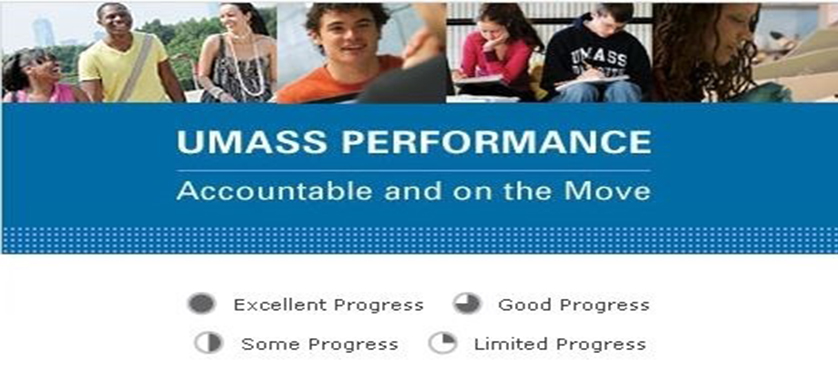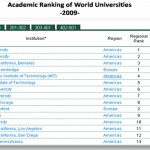University of Massachusetts – 2014 Performance Report
Being a public educational institution, the University of Massachusetts (UMass) has ensured a means for the widest range of citizens to be able to access their performance measures. Due to the need for transparency and accountability, they have issued a Performance Report in March 2014, which was made publicly available.
Operating a campus of more than 72,000 students, this information proves to be crucial, for both trustees and funders, as well as taxpayers and people interested in their educational and research offer. The report sheds light on the University’s performance history, the measurement tools employed to this end, and on the overall progress towards their institutional goals.
Click the previous image to view the full UMass Performance Report
The report is built focusing on 21 performance goals, contained by 6 major categories compared against their past performance records, to produce a global perspective on the state of the system, as a whole. Each area was assessed using a 4 points rating scale, with each level having been labeled respectively: Excellent Progress, Good Progress, Some Progress and Limited Progress.
According to their goal category, the findings can be thus summarized:
- Student experience – here the goals were ranked with “Excellent Progress” and “Good Progress”, given by the rise in the fact that students with higher GPAs, SATs and GREs have been admitted to all campuses, along with a greater concern to finding funding solutions and accommodating diversity;
- Educated Workforce & Engaged Citizenry – goals ranked with “Excellent Progress” and “Good Progress”, due to the distribution of campuses across the state and collaborations with the state’s community, and through partnerships with other organizations, to provide internships and research opportunities;
- World-Class Research & Development Enterprise – here goals are ranked with a general “Good Progress”, with 1 having been ranked “Some Progress”, due to the fact that the university’s ongoing endeavors to form new partnerships that provide research opportunities are dependent upon federal funding, which are relatively uncertain;
- Enhanced Social Well-Being – ranked in the same manner as above, “Good Progress”, with 1 having been ranked “Some Progress”, due to the fact that UMass strives to promote staff diversity through an array of grants and professional development programs, within a limited budget frame;
- Good Stewardship of Resources – goals here are generally ranked with “Good Progress”, with 1 exception, ranked with “Some Progress”, due to the fact that, although they have invested $2.5 in capital improvement, over 70% of the facility inventory is more than 30 years old;
- Telling & Selling the UMass Story – here goals were predominantly ranked with “Good Progress”, except for the ones that refer to being connected with alumni and other professionals, due to the fact that they need to be targeted and sought out.
The University of Massachusetts offers a good example of how performance measurement can be employed to strengthen transparency and accountability in public education institutions.
For more education KPIs, access Academic Education KPIs.
References:
- University of Massachusetts (2014), Performance report
- University of Massachusetts (2014), About UMass
Image source:

Tags: Education and Training performance, Performance in USA, Report Analysis, University of Massachusetts





